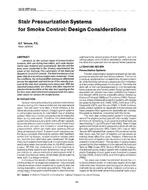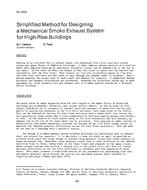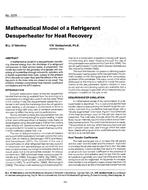R-value is an effective, well established, and widely accepted metric for describing the thermal performance of building insulation materials but it is an incomplete metric for describing the thermal performance of building enclosure assemblies. In practice, many building designers have directly applied insulation R-value to the thermal performance of building enclosure assemblies; however, with the proliferation of newmaterials and enclosure systems, this simplification increasingly results in poor predictions of performance. More accurate predictions have become increasingly important as stricter energy codes and the use of compliance computer modeling have proliferated.
The thermal performance of any building enclosure assembly is highly dependent on the amount of insulation installed; however it can also be heavily influenced by a number of other factors such as air leakage, thermal bridging, operating conditions, moisture content, and installation defects. These factors are not properly or completely captured when insulation R-value is used as the sole metric for assembly thermal performance. A consortium of insulation manufacturers, representing all types of insulating materials and all regions of North America, undertook a series of research projects to examine these issues and their impact on the prediction of the thermal performance of building enclosures.
This paper documents the development of the primary apparatus used in the research: a new hot box designed to accurately measure the true thermal performance of modern wall assemblies. The approach is based on ASTM C1363. However, a number of improvements and performance extensions have been made to facilitate the research: a large, double-guarded meter box; systems to simulate heating and cooling climates without removing the test specimen; a closed-loop air transfer system that induces and measures air pressure differences across and movement through the assembly; a tracer gas system to measure unintentional and intentionally induced airflows; and the ability to measure with greater precision. All of these features allow quantification of wall assembly performance that is more representative of actual in-service conditions. The apparatus components, capacity, accuracy, calibration and validation are presented.
Presented at Thermal Performance of Exterior Envelopes of Whole Buildings XII, December 2013
Citation: Thermal Performance of Exterior Envelopes of Whole Buildings XII
Product Details
- Published:
- 2013
- Number of Pages:
- 19
- File Size:
- 1 file , 5 MB
- Product Code(s):
- D-BldConf13-61


